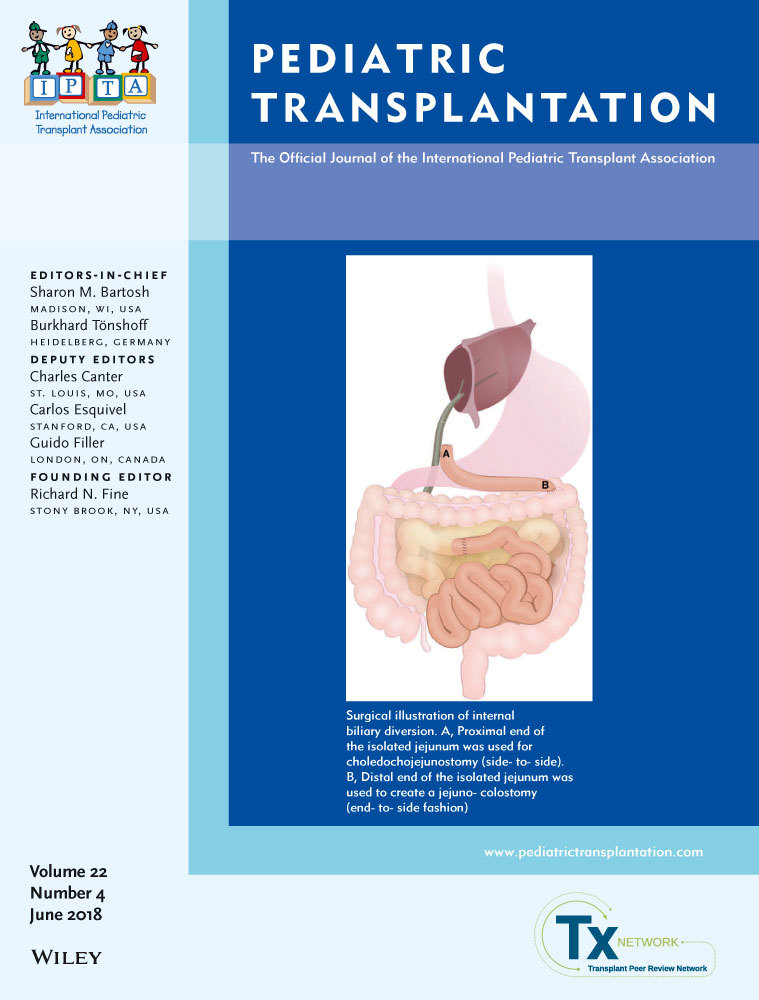Liver transplantation for neonatal-onset citrullinemia
Abstract
Citrullinemia or ASS deficiency in its classical form presents in the neonatal period with poor feeding, hyperammonemia, encephalopathy, seizures, and if untreated can be fatal. Despite advances in medical therapy, neurocognitive outcomes remain suboptimal. LT has emerged as a potential management option. A retrospective single-center review identified 7 children with a median age of 1.1 years (range, 0.6-5.8) at referral. Five children presented clinically, and 2 were treated prospectively from birth due to positive family history. All patients received standard medical and dietary therapy prior to LT. The indications for LT were frequent metabolic decompensations in 4, elective in 2, and ALF in 1. The median age at LT was 2.4 years (range, 1.3-6.5). Five patients received 6 left lateral segment grafts, one a live unrelated donor left lateral segment as an APOLT graft, and one a cadaveric whole liver graft as APOLT. One child required retransplantation due to hepatic artery thrombosis. Graft and patient survival were 86% and 100%, respectively. Median follow-up is 3.1 years (range, 0.1-4.1), and the median age at follow-up is 5.5 years (range, 4.0-9.8). There have been no metabolic decompensations in 6 children, while 1 patient (with APOLT) developed asymptomatic hyperammonemia with no clinical or histological signs of liver injury, requiring additional medical therapy. Our medium-term experience following LT in citrullinemia is favorable, demonstrating a positive transformation of the clinical phenotype.




